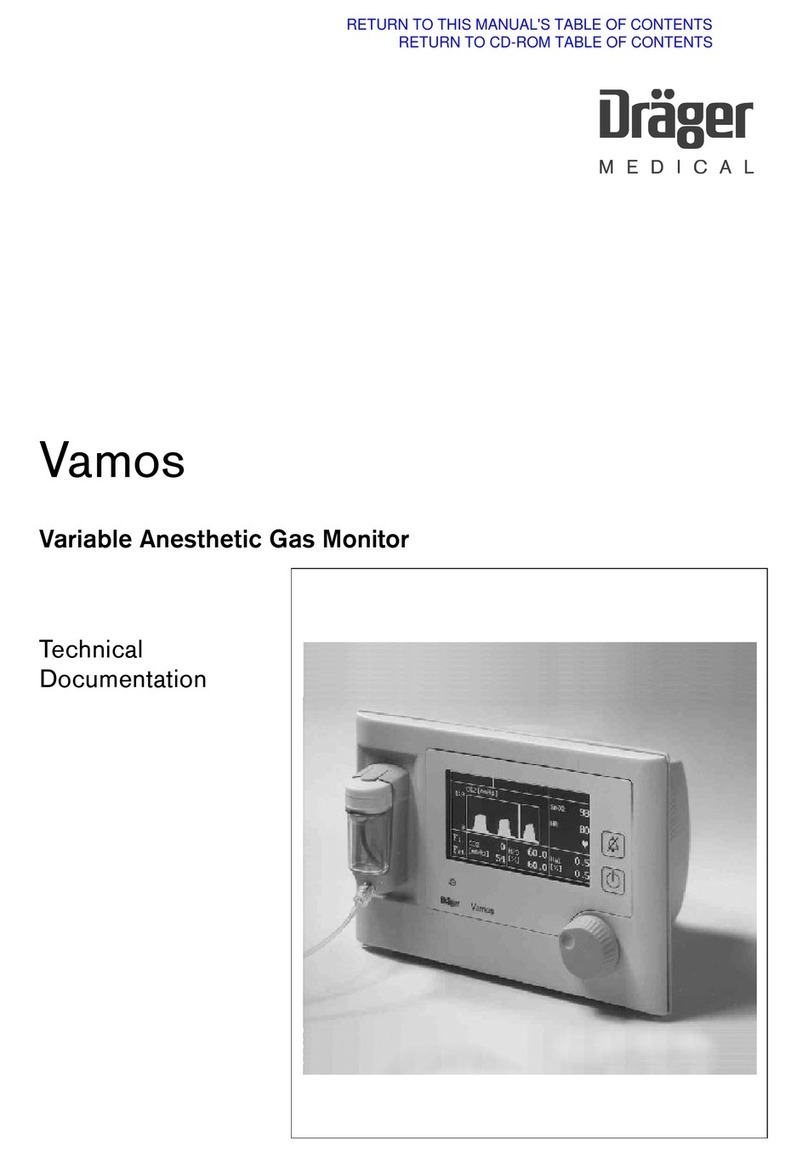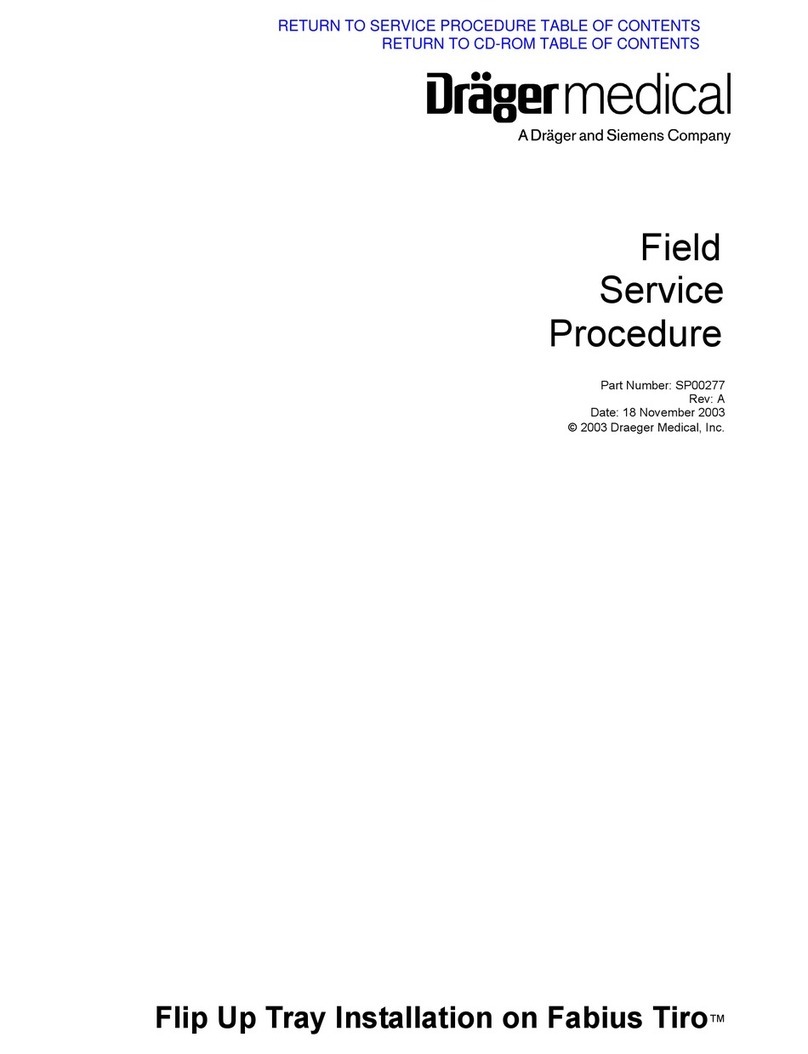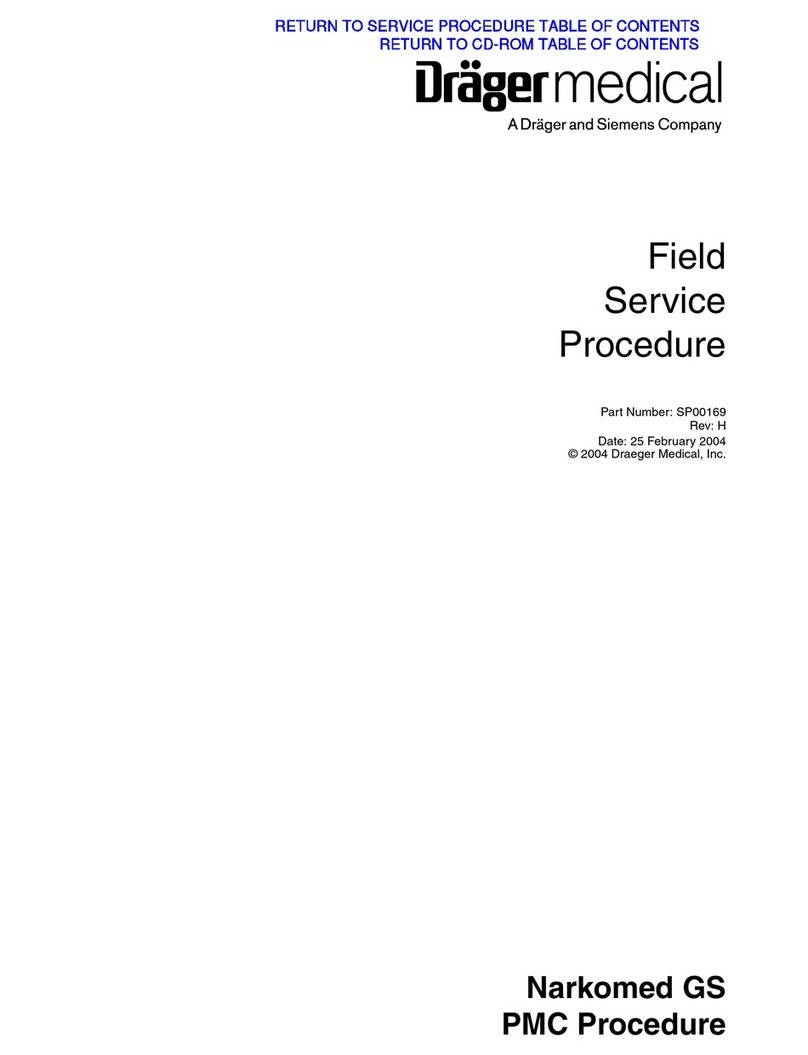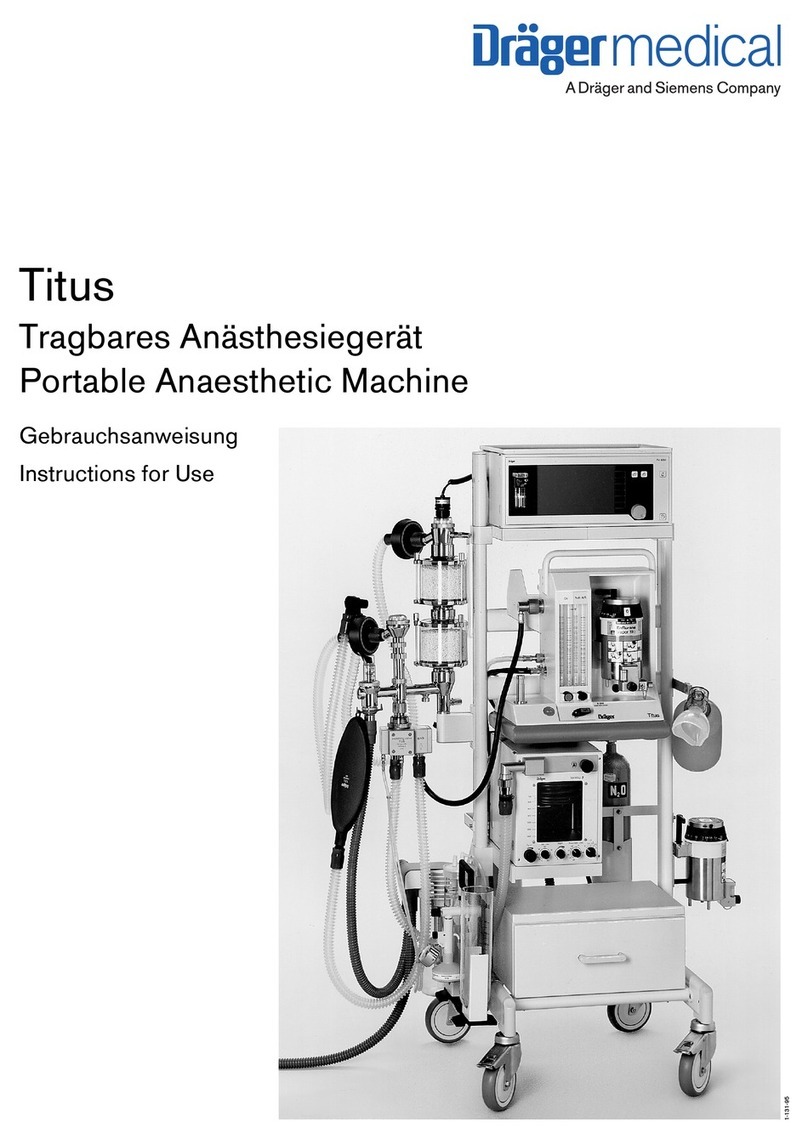
Contents
2
Contents
For Your Safety and that of Your Patients . . . . . . . . . . . . . . 3
Safety instructions . . . . . . . . . . . . . . . . . . . . . . . . . . . . . . . . . . . . 3
Intended Use . . . . . . . . . . . . . . . . . . . . . . . . . . . . . . . . . . . . . . . . 4
Operating Concept . . . . . . . . . . . . . . . . . . . . . . . . . . . . . . . . . . 6
Preparation . . . . . . . . . . . . . . . . . . . . . . . . . . . . . . . . . . . . . . . . . 7
Shelf . . . . . . . . . . . . . . . . . . . . . . . . . . . . . . . . . . . . . . . . . . . . . . . 7
Com act rail/rail brackets . . . . . . . . . . . . . . . . . . . . . . . . . . . . . 7
Swivel tray . . . . . . . . . . . . . . . . . . . . . . . . . . . . . . . . . . . . . . . . . . . 7
Ensuring stability . . . . . . . . . . . . . . . . . . . . . . . . . . . . . . . . . . . . . 7
X-ray tray . . . . . . . . . . . . . . . . . . . . . . . . . . . . . . . . . . . . . . . . . . . . 8
Warming bed . . . . . . . . . . . . . . . . . . . . . . . . . . . . . . . . . . . . . . . . 9
Tilting the bed . . . . . . . . . . . . . . . . . . . . . . . . . . . . . . . . . . . . . 10
Bed cano y . . . . . . . . . . . . . . . . . . . . . . . . . . . . . . . . . . . . . . . 10
Bronchial as irator . . . . . . . . . . . . . . . . . . . . . . . . . . . . . . . . . 11
Accessories for oxygen thera y . . . . . . . . . . . . . . . . . . . . . . . 12
Fitting the hose bracket . . . . . . . . . . . . . . . . . . . . . . . . . . . . . 13
Drainage canister hook . . . . . . . . . . . . . . . . . . . . . . . . . . . . . . 13
Com ressed air distributor / socket stri . . . . . . . . . . . . . . 13
Storage . . . . . . . . . . . . . . . . . . . . . . . . . . . . . . . . . . . . . . . . . . . 13
In-hos ital trans ort . . . . . . . . . . . . . . . . . . . . . . . . . . . . . . . . . 13
Testing Readiness for Operation . . . . . . . . . . . . . . . . . . . . . 14
Before using for the first time . . . . . . . . . . . . . . . . . . . . . . . . 14
Before each use . . . . . . . . . . . . . . . . . . . . . . . . . . . . . . . . . . . 14
Operation . . . . . . . . . . . . . . . . . . . . . . . . . . . . . . . . . . . . . . . . . . 17
Precautions . . . . . . . . . . . . . . . . . . . . . . . . . . . . . . . . . . . . . . . 17
Switching on . . . . . . . . . . . . . . . . . . . . . . . . . . . . . . . . . . . . . . . 19
Manual o eration . . . . . . . . . . . . . . . . . . . . . . . . . . . . . . . . . . . 19
Using baby control mode . . . . . . . . . . . . . . . . . . . . . . . . . . . . 21
ThermoMonitoring . . . . . . . . . . . . . . . . . . . . . . . . . . . . . . . . . . 26
Using heated gel mattress . . . . . . . . . . . . . . . . . . . . . . . . . . . 27
Using the bed cano y . . . . . . . . . . . . . . . . . . . . . . . . . . . . . . . 31
Recommended heater settings for heat thera y . . . . . . . . . 33
Using hotothera y, o tional . . . . . . . . . . . . . . . . . . . . . . . . . 36
Switching lighting On/Off . . . . . . . . . . . . . . . . . . . . . . . . . . . 37
Central alarm . . . . . . . . . . . . . . . . . . . . . . . . . . . . . . . . . . . . . . 37
Configuration mode . . . . . . . . . . . . . . . . . . . . . . . . . . . . . . . 38
Oxygen thera y . . . . . . . . . . . . . . . . . . . . . . . . . . . . . . . . . . . . 43
Bronchial as iration . . . . . . . . . . . . . . . . . . . . . . . . . . . . . . . . 43
Taking X-rays . . . . . . . . . . . . . . . . . . . . . . . . . . . . . . . . . . . . . . 44
Shutting down . . . . . . . . . . . . . . . . . . . . . . . . . . . . . . . . . . . . . 44
Care . . . . . . . . . . . . . . . . . . . . . . . . . . . . . . . . . . . . . . . . . . . . . . 45
Dismantling . . . . . . . . . . . . . . . . . . . . . . . . . . . . . . . . . . . . . . . . 45
Disinfecting/cleaning/sterilising . . . . . . . . . . . . . . . . . . . . . . 45
Before next use . . . . . . . . . . . . . . . . . . . . . . . . . . . . . . . . . . . . 45
Troubleshooting . . . . . . . . . . . . . . . . . . . . . . . . . . . . . . . . . . . 46
General system failures . . . . . . . . . . . . . . . . . . . . . . . . . . . . . . 46
System faults – Babytherm 8010
(Mattress heating) . . . . . . . . . . . . . . . . . . . . . . . . . . . . . . . . . . 46
System faults radiant warmer . . . . . . . . . . . . . . . . . . . . . . . . . 47
Maintenance Intervals . . . . . . . . . . . . . . . . . . . . . . . . . . . . . . 48
Dis osing of the unit . . . . . . . . . . . . . . . . . . . . . . . . . . . . . . . . 48
hat’s what . . . . . . . . . . . . . . . . . . . . . . . . . . . . . . . . . . . . . . . 49
Com lete unit . . . . . . . . . . . . . . . . . . . . . . . . . . . . . . . . . . . . . . 49
Radiant warmer . . . . . . . . . . . . . . . . . . . . . . . . . . . . . . . . . . . . 50
Controller . . . . . . . . . . . . . . . . . . . . . . . . . . . . . . . . . . . . . . . . . 51
Controller, rear view . . . . . . . . . . . . . . . . . . . . . . . . . . . . . . . . 53
Technical Data . . . . . . . . . . . . . . . . . . . . . . . . . . . . . . . . . . . . 54
Construction and Description . . . . . . . . . . . . . . . . . . . . . . . 58
Alarm descri tion . . . . . . . . . . . . . . . . . . . . . . . . . . . . . . . . . . . 59
Order List . . . . . . . . . . . . . . . . . . . . . . . . . . . . . . . . . . . . . . . . . 60
Parts list . . . . . . . . . . . . . . . . . . . . . . . . . . . . . . . . . . . . . . . . . . . 61
Index . . . . . . . . . . . . . . . . . . . . . . . . . . . . . . . . . . . . . . . . . . . . . 62



















































